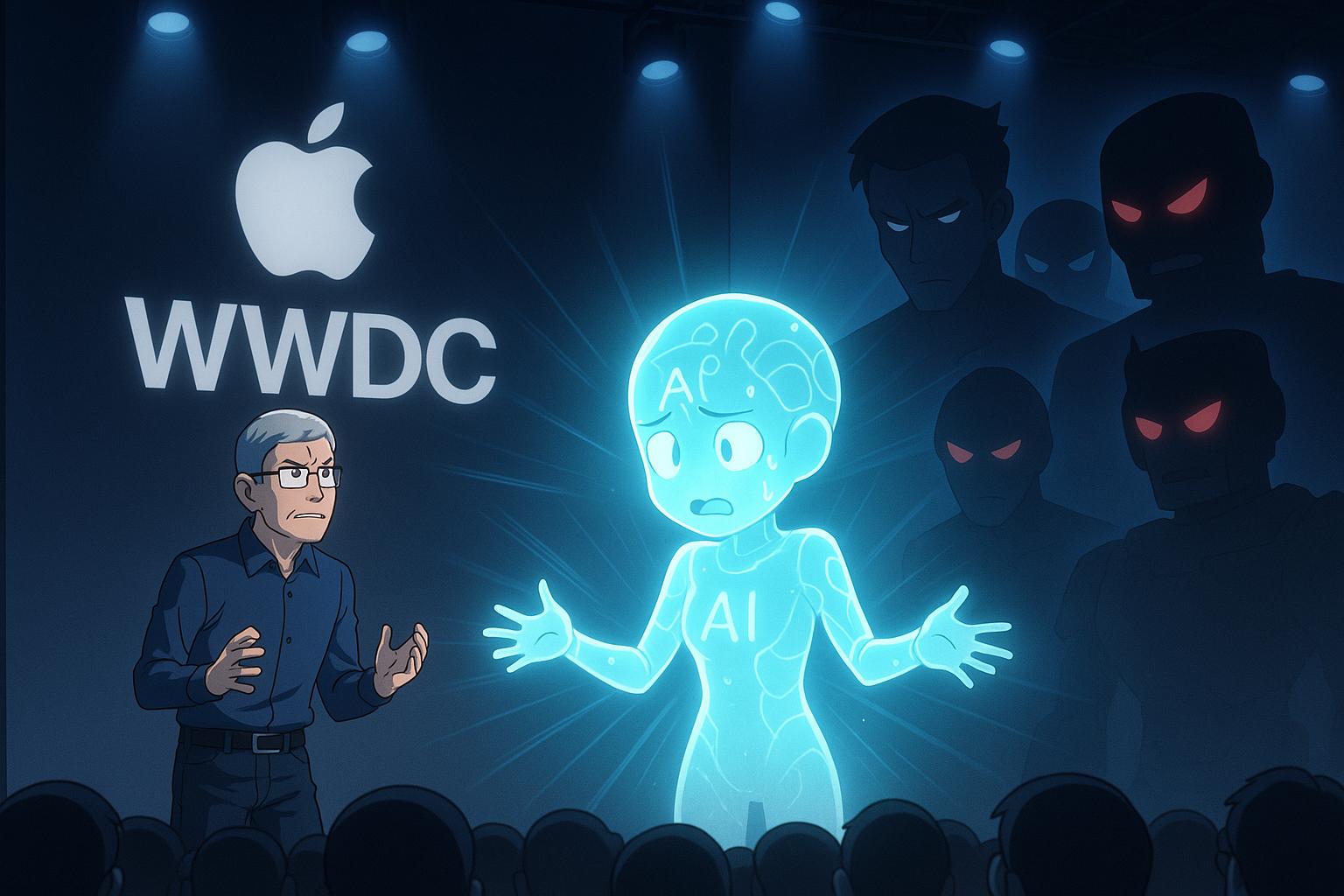As Apple Inc. gears up for its Worldwide Developers Conference (WWDC) on June 9, 2025, it faces mounting challenges in the artificial intelligence (AI) landscape. According to statements from Bloomberg's Mark Gurman, the company’s AI platform, Apple Intelligence, has not met expectations since its highly publicised launch a year ago. Once seen as a potential game-changer, the platform has been critiqued for prioritising marketing over genuine technological innovation, with features such as Writing Tools and Genmoji deemed useful yet unremarkable compared to offerings from competitors like OpenAI and Google.
The anticipation surrounding WWDC is palpable, but industry insiders suggest that Apple may struggle to create a significant impact in AI this year. With the rapid advancements achieved by rivals, particularly in high-performing language models and applications, Apple finds itself under pressure not only to showcase its capabilities but also to establish its relevance in an increasingly competitive marketplace. The most notable announcement expected is the release of Apple's Foundation Models to third-party developers, enabling them to harness Apple’s on-device technology for lightweight tasks like text summarisation.
Hardware vulnerabilities have compounded Apple’s AI challenges. Many iPhones are limited by 6GB of RAM, which stifles the processing power required for more advanced AI functionalities. This limitation has prompted the company to consider hardware upgrades in future devices and the adoption of a software development kit for app developers, positioning the upcoming iOS 19 as a critical juncture for refining its AI strategy. Observers note that without significant improvements, Apple risks falling even further behind its competitors, which have begun integrating more dynamic AI functionalities.
Internal dynamics at Apple have also played a key role in the company's AI struggles. Since the hiring of John Giannandrea in 2018, the vision for AI enhancement has encountered delays, largely attributed to a lack of cohesion in leadership and development oversight. After Giannandrea's departure from control over product development, Mike Rockwell took the helm of the AI strategy, but concerns about internal alignment and focus persist. The fallout from Apple's slower pace in AI innovation, highlighted by the release of ChatGPT in 2022, has led to high levels of frustration within the organisation, emphasising the urgent need for rapid adaptation or risk technological irrelevance.
As Apple prepares for WWDC, the stakes have never been higher. The planned introduction of features such as smarter Siri capabilities, intelligent battery management through machine learning, and advanced developer tools in iOS 19 aims to infuse some much-needed innovation. However, the combination of existing hardware limitations, internal restructuring challenges, and a rapidly evolving competitive landscape raises critical questions about Apple's future in AI. This pivotal moment demands an ambitious vision, as stakeholders watch closely to see if Apple can sufficiently recalibrate its strategy to reclaim its position as a leader in technology innovation.
Meanwhile, upcoming hardware developments, such as the delayed launch of a new HomePod with a screen, further underscore Apple's commitment to integrating AI throughout its ecosystem. Although rumored for WWDC, its release may coincide with the launch of the iPhone 17, indicating a strategic approach to reinvigorate interest in Apple's smart home offerings amid fierce competition.
As the conference approaches, all eyes will be on Apple to see whether it can truly shift gears in its AI ambition or risk being outpaced entirely by more agile competitors.
Reference Map:
Source: Noah Wire Services
